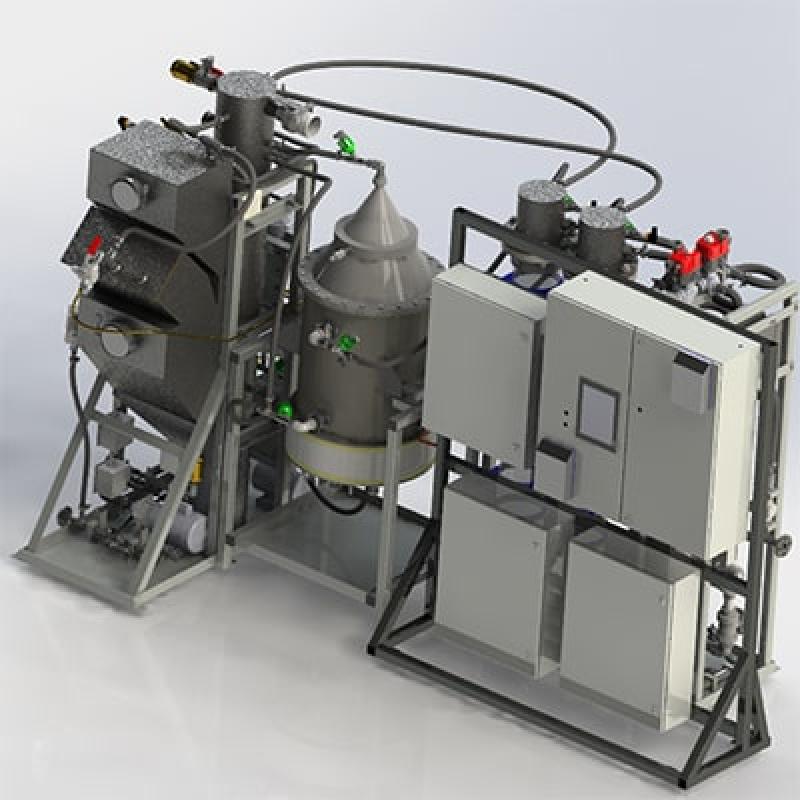
Terragon Environmental Technologies Inc. says its Sewage Wastewater Electrochemical Treatment Technology System (WETT-S) eliminates about 75 per cent more suspended solids in water than traditional wastewater systems, without relying on disposable filters.
Earlier this month, the Montreal-based company installed the first marine application of the WETT-S on the Canadian Coast Guard ship Earl Grey.
“We started about 10 years ago, the development of the wastewater treatment technology we call WETT. It's a new approach based on electrochemical processes," Ramona Pristavita, Terragon’s vice-president of engineering, told SustainableBiz.
""It’s not new science, but to be used in commercial products, that's pretty new. And there are not so many systems based on electrochemistry out there. The majority are based on filtration, absorption (and) biological systems.
“The advantage of this approach is you don't have to use any chemicals, you don't use the filters, you don't need any bacteria to grow and colonize and be happy. So it's a more solid approach.”
Terragon was founded in 2004. Aside from its WETT product line, it also produces the Micro Auto Gasification System (MAGS), which treats all combustible waste and oils and is meant to replace incinerators on ships and other applications. It is able to convert up to one tonne per day of solid waste into hot water, clean emissions and biochar.
Terragon’s WETT systems
The icebreaker Earl Grey, based in Dartmouth, N.S., previously had Terragon’s Wastewater Electrochemical Treatment Technology for oily water installed in 2019. The company has also developed the WETT-G, for treating greywater originating from showers, bathing and laundry.
The WETT-S is fully automated and is able to treat blackwater, greywater, galley wastewater and watery sludges.
All of Terragon’s WETT systems are modular and, according to a company presentation, generate up to 7,000 litres of fully disinfected water per day per module. Pricing depends on the needs of the client, such as the size of the ship or the amount of wastewater to be processed.
Terragon’s electrochemical systems use the process of electrocoagulation.
“What electrocoagulation does, you fine tune the process by releasing the right amount of ions from a set of metal plates. In our case, we use aluminum plates,” Pristavita explained. “So we apply current to this set of aluminum plates, and they release ions. These ions are like the in-situ contaminant, that are gonna stick together and remove all the contaminants.”
Terragon aims for the WETT-S to be in use in environmentally sensitive areas like the Baltic Sea, or on military bases in remote areas so they don’t contaminate the land. The WETT technologies are not large enough to handle cruise ships, but could be implemented on expedition ships to Antarctica, for example, or superyachts.
The company has four main markets: marine, defence, remote applications and healthcare.
“We have the military market . . . Also the remote community eco-tourism. We're involved in a lot of projects right now, new eco-resorts that are being built require as part of their permitting, they need a plan to not discharge anything. So the WETT-S for these types of projects also is very important,” Theodora Alexakis, Terragon’s vice-president of business development, said.
“Then the marine market, like we've mentioned. The variations of the WETT-S also can be used for different types of highly contaminated waste, for example, in the hospital sectors.”
At the same time, the company is focusing on a scale-up of its electrocoagulation technologies so systems might in future be able to handle the capacity of a cruise ship.
Terragon’s future
The company is in discussions with the hospital sector, but Pristavita did not disclose details except to say Terragon is talking with Red Cross “and other groups.”
“The big advantage is that our WETT-S technology is able to remove certain contaminants . . . even microplastics,” Pristavita said. “So other contaminants that are persistent, and other technologies are not able to remove them.”
This focus also applies to the MAGS, which can remove anything that can be gasified, such as hospital gloves, packing material or food.
Terragon is also working on three other systems:
- one to treat hazardous waste like masks;
- another to treat electronic waste;
- while the third technology is a scaled-down version of MAGS able to produce electricity, intended for small habitats such as farms.
The company has a prototype in development with Parks Canada focused on producing potable water by removing contaminants, called TAMAQUA.
Alexakis explained that as regulations around environments like zero-waste habitats become more strict in coming years, Terragon anticipates it being easier to sell its products in a variety of markets.
It was noted however, most of Terragon’s current sales are exported out of Canada, with Pristavita saying they would like to see more homegrown sales.
“I think our desire would be to see these units on every single ship in every single location . . . where they don't have access to the grid (and) it's not easy for them to take care of their waste locally,” Pristavita said.










